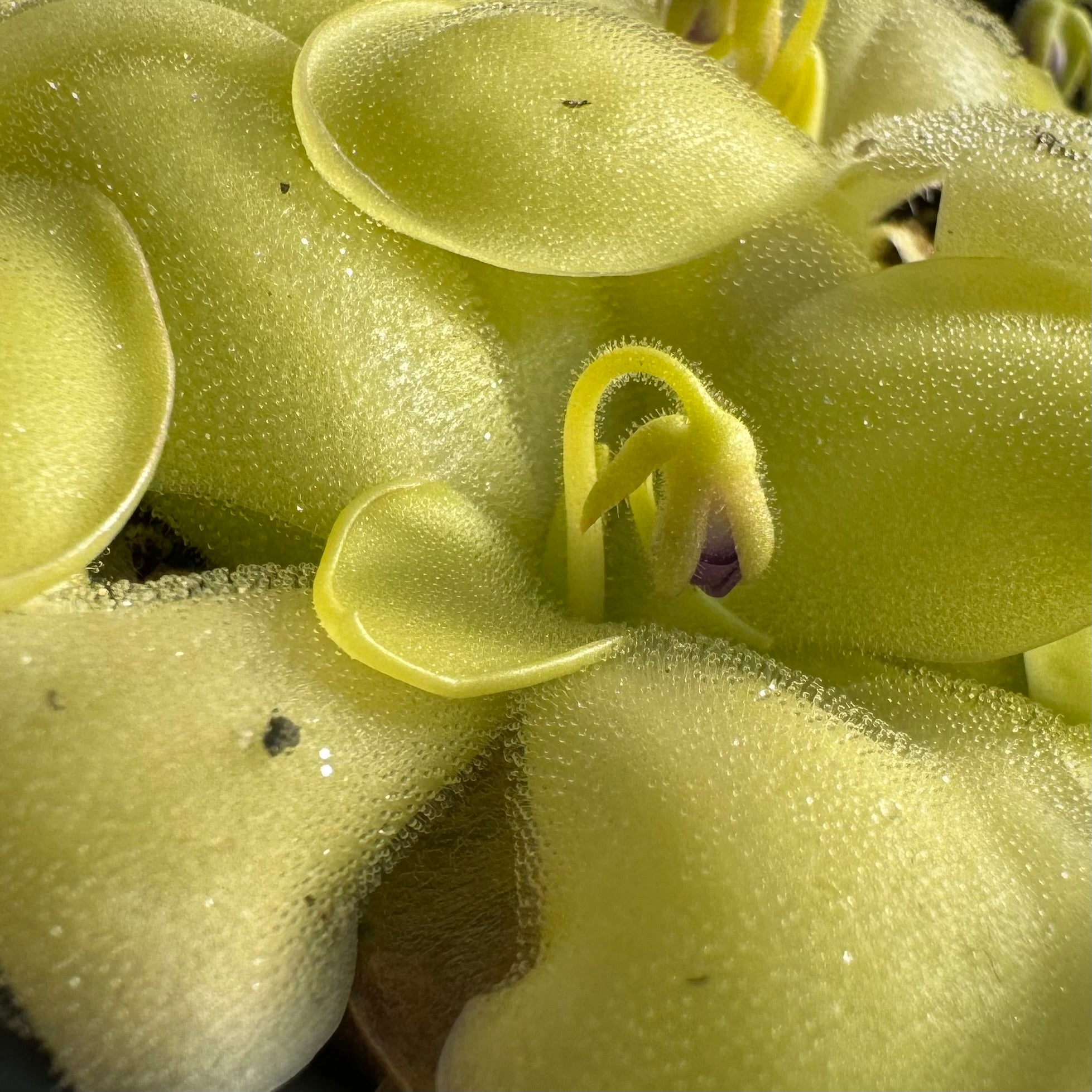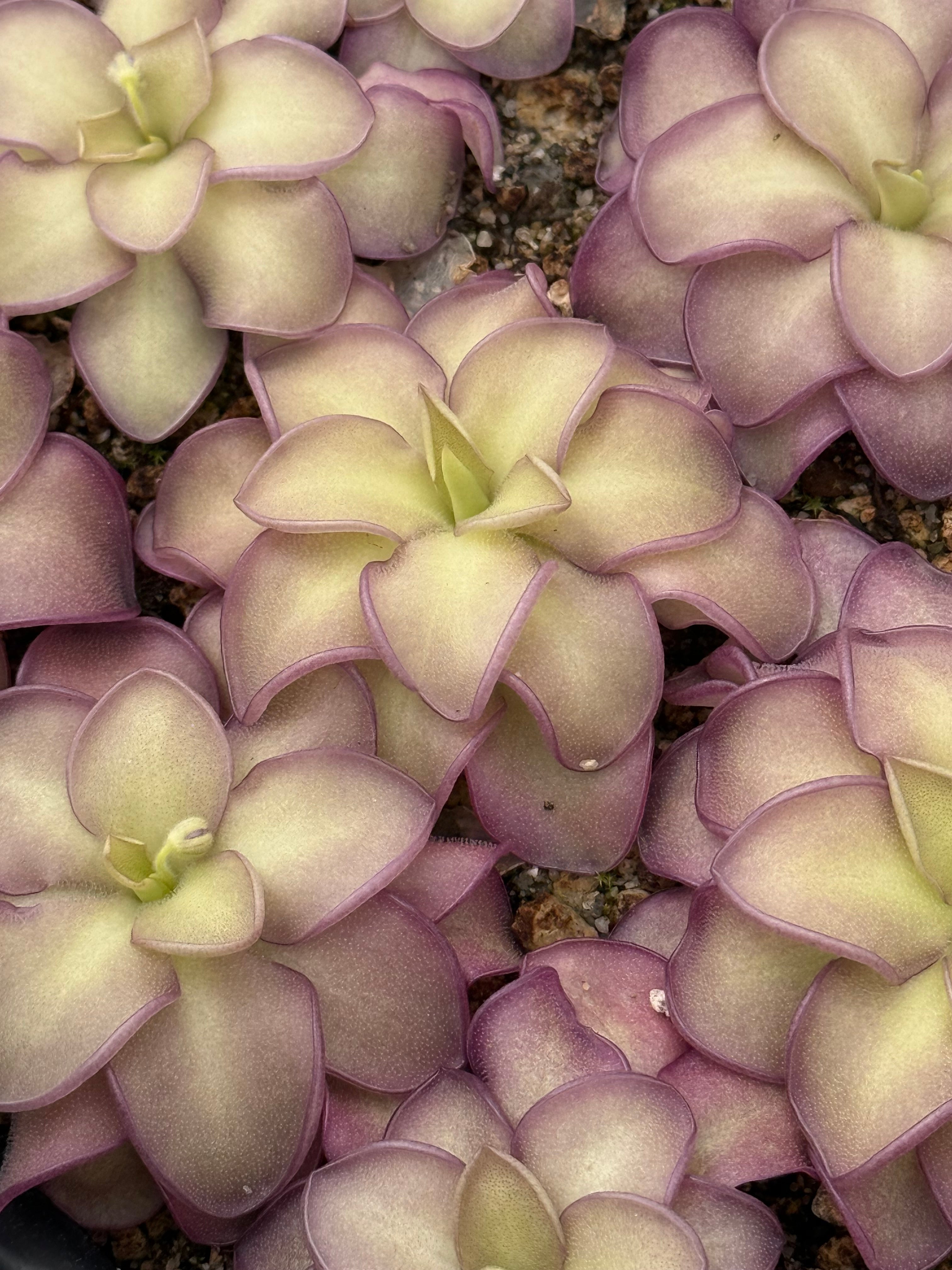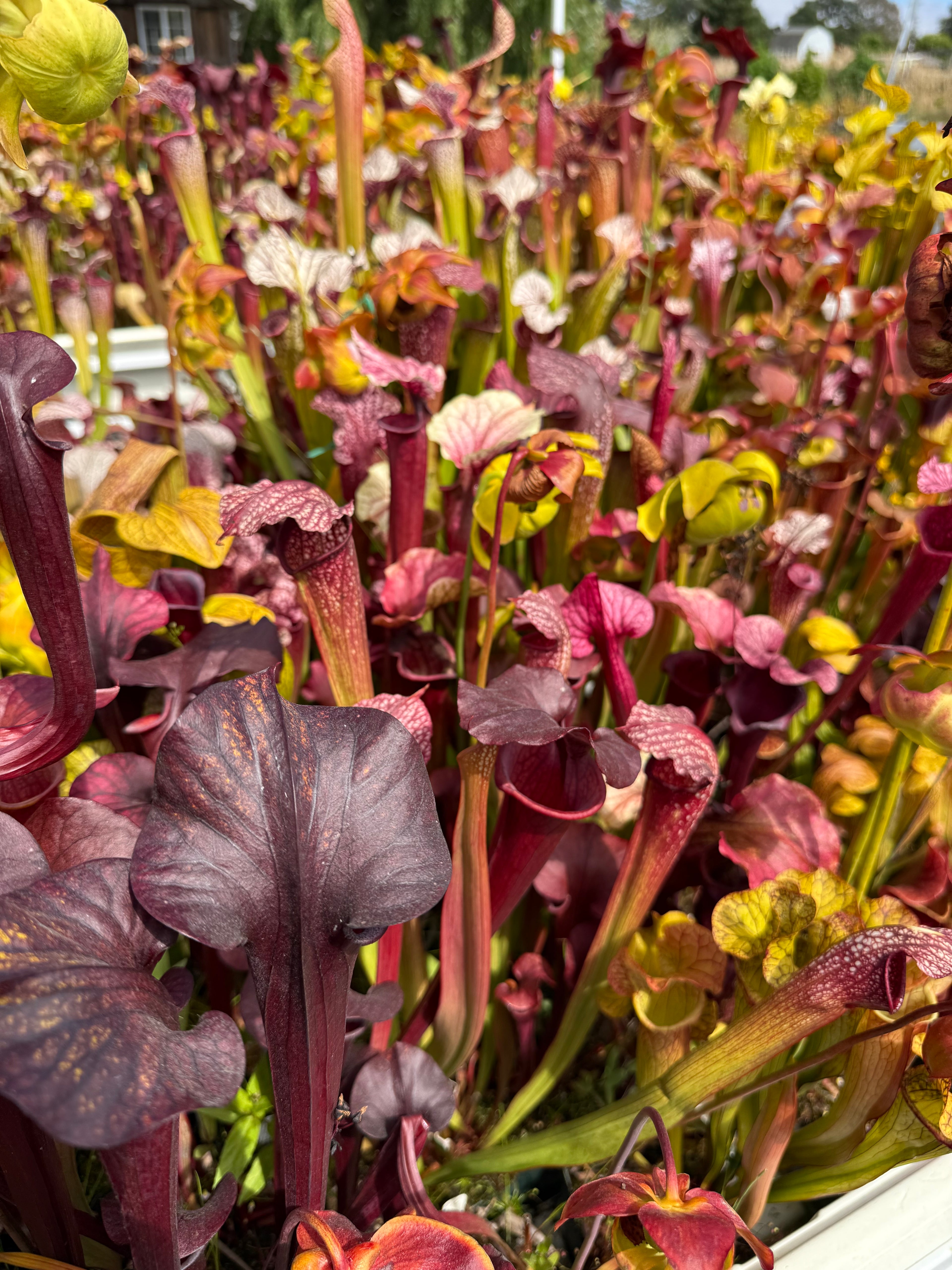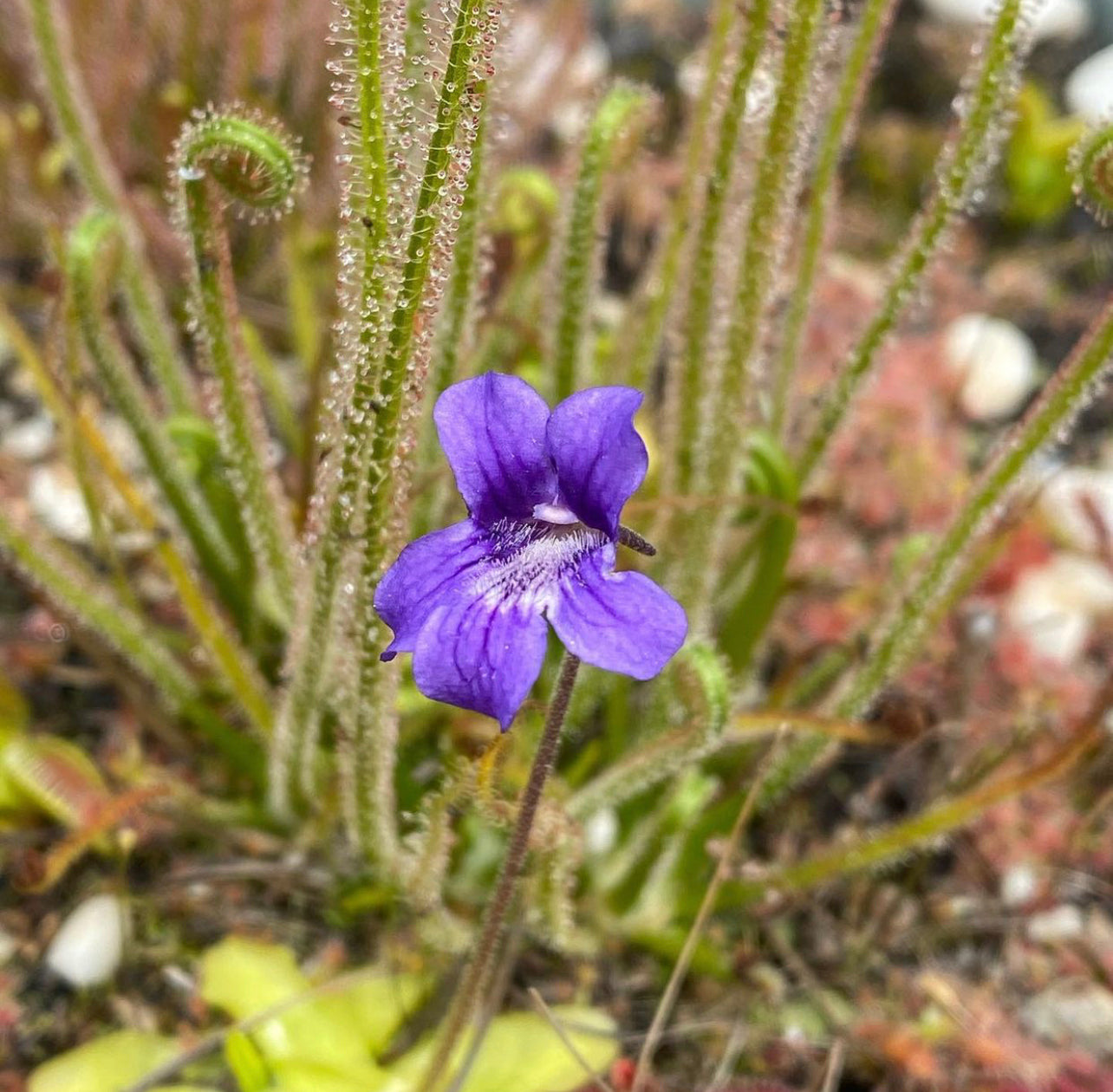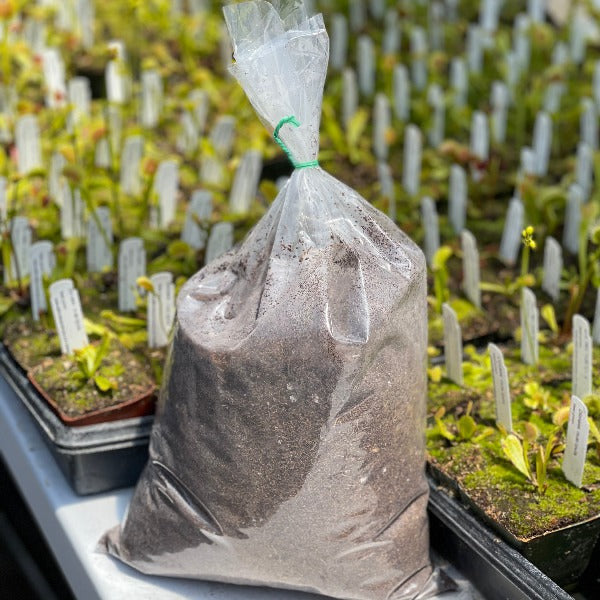If you have more questions or would like to see some of these care tips in action, check out our YouTube playlist All About Sarracenia! Be sure to subscribe for up to date videos and comment if you have questions!
SUN: Full sun, outdoors. It is common for several of the traps to "burn" and die back when you first put it into the sun, it is just getting used to the full sun exposure and it will quickly grow new traps. They will thrive in full sun, meaning at least six hours of direct light. You can grow them indoors on a very, very sunny windowsill or in a terrarium under grow lights but they generally do best outdoors. Sometimes the lids of Sarracenia will slightly burn, this is the sweet nectar burning a bit in the hot sun, it is totally normal and nothing to worry about. If you live in a very hot, dry and sunny area, like Arizona, it will be best to grow them in full morning sun with protection from the afternoon sun.
WATER: Always keep them sitting in a saucer with a few inches of distilled or purified water. Do not let them dry out. This is especially important on the hottest days, be sure to check your water levels frequently in the summer. Always use distilled, reverse osmosis or rain water only.
TEMPERATURE AND DORMANCY: These are warm-temperate plants meaning that they need warm summers and chilly winters. They should be grown outdoors (year-round in areas with mild winters) if possible. They thrive in temperatures ranging from 20 degrees - 90 F degrees and can take a freeze or high temperature spike up to 110 F degrees for a brief period.
If you live in an area with very cold winters, where night time temperatures drop below 20 degrees for sustained periods, you have options for providing them with a winter dormancy. Dormancy is triggered by a combination of exposure to shorter photo periods and cooler temperatures in the 50-60's F. While you can skip a dormancy period once or twice, long term your plant will begin to do poorly and will eventually die if you skip this crucial period.
Your can bring your plant indoors to a sunny windowsill in an unheated room or garage where the night time temperatures will dip down into the 50-60 F. Leave it sitting in water during this period and put it outside again when outside temperatures increase.
Or you can mulch them in very, very well outdoors. You will need to pack at least four inches of mulch on top of the plants and all around the sides to prevent winds from chilling them. Growing them in an in-ground bog will help insulate them as well.
Lastly you can remove the plants from their pots, gently clean the roots of soil, wrap the roots in a bit of damp long-fibered New Zealand sphagnum moss, place the plants in a seal-able bag and put the bag into the refrigerator. Leave them in the refrigerator for at least six weeks or until night time temperatures in your area are consistently over 32 F, periodically checking on them to make sure they are still a bit moist and are not growing any fungus. Pot them back up when you remove them from the fridge.
SOIL: We prefer a mix of four parts fertilizer free peat moss to one part perlite.
FEEDING AND FERTILIZER: When grown outdoors Sarracenia will catch plenty of food and do not need supplementation. You can still supplement with a foliar fertilizer. Apply MaxSea fertilizer once per month to the foliage and into the pitchers. Dilute 1/4 teaspoon of MaxSea into one gallon of water and then apply.
*If you see black mold on your pitcher, don't panic! This harmless mold grows on the pitcher nectar, and it is not harmful to your plant. It exists on all Sarracenia but is more noticeable on the anthocyanin-free plants. Although some consider it unsightly, it is totally normal and occurs on both plants in the wild and in cultivation. It can be difficult to wipe off, but the more persnickety of us can try!


